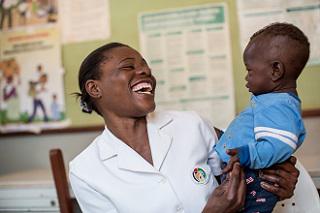
New HIV infections among adolescents are projected to rise from 250,000 in 2015 to nearly 400,000 annually by 2030 if progress in reaching adolescents stalls, according to a new report released by UNICEF today.
“The world has made tremendous progress in the global effort to end AIDS, but the fight is far from over – especially for children and adolescents,” said UNICEF Executive Director Anthony Lake. “Every two minutes, another adolescent – most likely a girl – will be infected with HIV. If we want to end AIDS, we need to recapture the urgency this issue deserves -- and redouble our efforts to reach every child and every adolescent.”
AIDS remains a leading cause of death among adolescents, claiming the lives of 41,000 adolescents aged 10-19 in 2015, according to the 7th Stocktaking Report on Children and AIDS: For Every Child: End AIDS.
The report proposes strategies for accelerating progress in preventing HIV among adolescents and treating those who are already infected. These include:
• Investing in innovation including in locally grown solutions.
• Strengthening data collection.
• Ending gender discrimination including gender-based violence and countering stigma.
• Prioritising efforts to address adolescents’ vulnerabilities by providing combination prevention efforts including pre-exposure prophylaxis, cash transfers and comprehensive sexuality education.
Globally there were nearly 2 million adolescents aged 10 -19 living with HIV in 2015. In sub-Saharan Africa, the region most impacted by HIV, girls accounted for three out of every four new infections among adolescents aged 15-19.
Other findings in the report include:
• Remarkable progress has been made in preventing mother-to-child transmission of HIV. Globally, 1.6 million new infections among children were averted between 2000 and 2015.
• 1.1 million children, adolescents and women were newly infected in 2015.
• Children aged 0–4 living with HIV face the highest risk of AIDS-related deaths, compared with all other age groups, and they are often diagnosed and treated too late. Only half of the babies born to HIV-positive mothers receive an HIV test in their first two months, and the average age that treatment begins among children with vertically acquired HIV in sub-Saharan Africa is nearly 4 years old.
Despite progress in averting new infections and reducing deaths, funding for the AIDS response has declined since 2014, UNICEF said.
Source: UNICEF
 FR
FR EN
EN AR
AR








